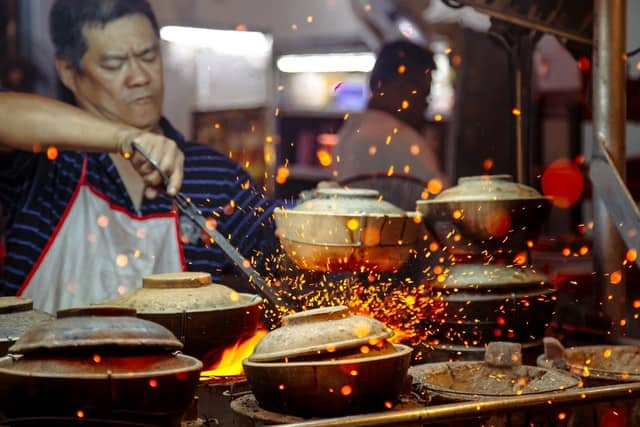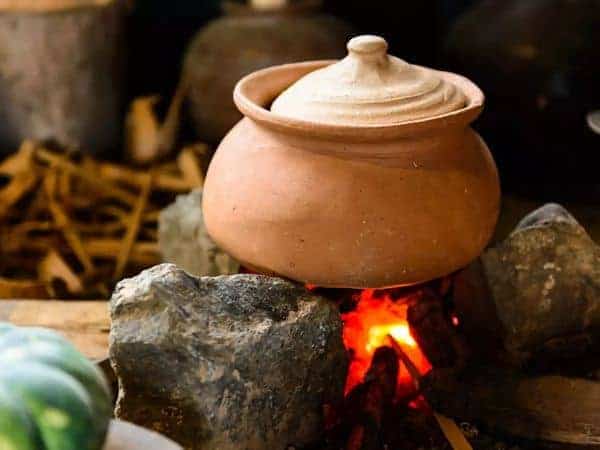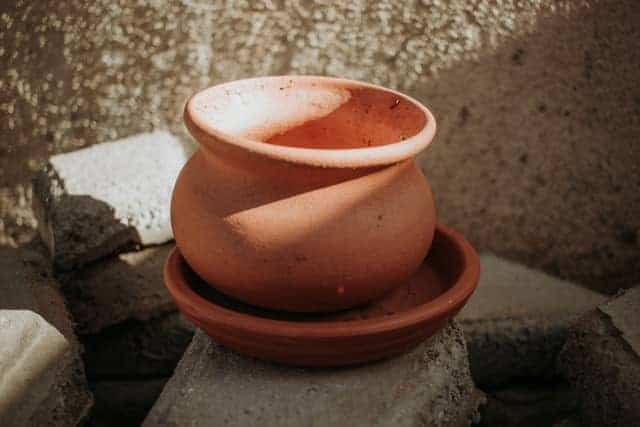Clay pot cookware is made from clay that has been fired in a kiln. It is typically unglazed on the inside, which allows it to absorb flavor and moisture from food as it cooks.
Clay pots are also very versatile and they can be used on any type of cooking surface, including gas, electric, and induction stovetops, as well as in the oven.
It is an excellent choice for slow-cooked dishes, as the clay helps to retain heat and moisture and has many benefits that make it a great choice for cooking.
Dive Deeper with Our Pillar Page!
Embark on a culinary journey by delving into our extensive collection of posts on ceramic cookware. Not only will you grasp the foundational elements of their composition, but you’ll also discover the intricacies and artistry behind cooking with them.
Our meticulously curated guides promise to enrich the knowledge of both novices and seasoned enthusiasts alike.
Key Information of Clay Pot Cookware
Composition: Clay pots are primarily made of natural clay, often combined with water, and then molded and baked. This natural composition ensures no harmful toxins leach into your food.
Heat Distribution: One of the marvels of clay pots is their exceptional heat distribution. They gradually heat up and maintain a consistent temperature, ensuring even cooking.
Care Tips: Though durable, clay pots need love. Avoid sudden temperature changes, and always pre-soak before the first use. Hand-washing is recommended to retain their luster.
Versatility: Clay pots aren’t just for stews! Their heat retention properties make them ideal for a variety of dishes, from bread to curries and even desserts.
The Making of Clay Pot Cookware
The intricate art of crafting clay pot cookware traces its steps back to nature’s lap. It all begins with the meticulous extraction of natural clay, predominantly sourced from the serene riverbeds that have aged the clay to perfection.
This earthy substance is then passed through rigorous cleansing and purification processes, ensuring its prime quality. Following this, a judicious mix of water and clay is curated to create a molding consistency.
Skilled artisans, with years of experience, either employ their deft hands or specialized molds to shape these pots. Left under the embracing warmth of the sun, they undergo a natural drying phase. The culmination of this process sees these pots being baked in kilns, subject to soaring temperatures.
This final step ensures not only the pot’s robust structure but also its long-lasting durability.
- From Riverbed to Table: Crafting pots with nature’s finest.
- Artisan’s Touch: Molding perfection with hands and molds.
- Kiln’s Embrace: High temperatures ensure durability.
Benefits of Clay Pot Cookware:
Clay pots, with their roots deep in history, offer modern kitchens a healthy cooking alternative. These pots, free from toxins, champion clean eating.
Clay pot Cookware offers benefits like exceptional heat retention reduces energy consumption, and their inherent composition elevates every dish’s flavor, adding a distinct earthy aroma. Moreover, their rustic charm brings a touch of timeless elegance to kitchen spaces.
- Pure and Safe: Toxin-free culinary experiences.
- Savor the Flavor: A unique taste in every bite.
- Timeless Beauty: Blending tradition with modern aesthetics.
Caring for Your Clay Pot Cookware
Clay pots, while resilient, demand a touch of gentle care to preserve their natural beauty and functionality. Before these pots embark on their culinary journey, seasoning becomes paramount.
This process not only strengthens them but also ensures enhanced food flavors over time. When cleaning beckons, it’s essential to steer clear of abrasive scourers. Instead, a soft brush and mild detergent should be your go-to, for maintaining the pot’s integrity and appearance.
Storing these pots requires attention: a cool, dry space is their haven, and ensuring they’re completely dry wards off mold threats. If cooking on stovetops, a heat diffuser becomes an ally, protecting your cherished pot from direct intense heat and potential cracks, thereby prolonging its lifespan.
- Initial Ritual: Always season before the first culinary escapade.
- Gentle Cleansing: Mild detergents and soft brushes for longevity.
- Safe Cooking: Embrace heat diffusers for a consistent, crack-free experience.
For the people who have more questions about a clay pot, click to learn more.






